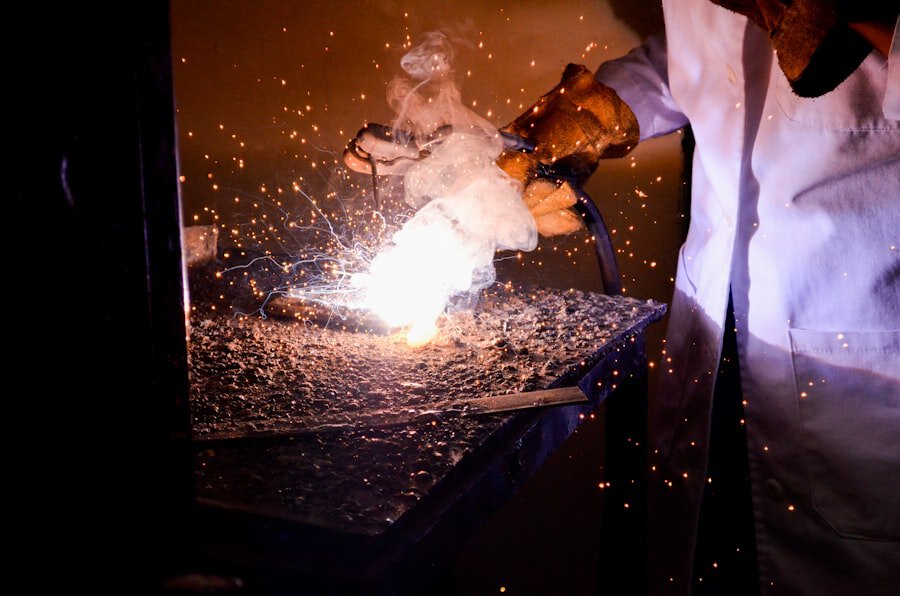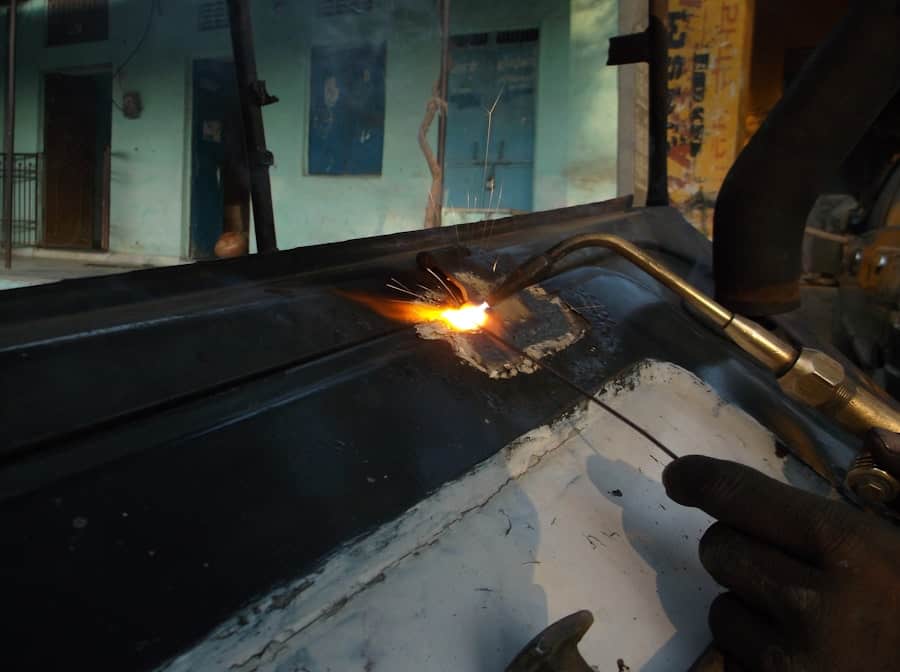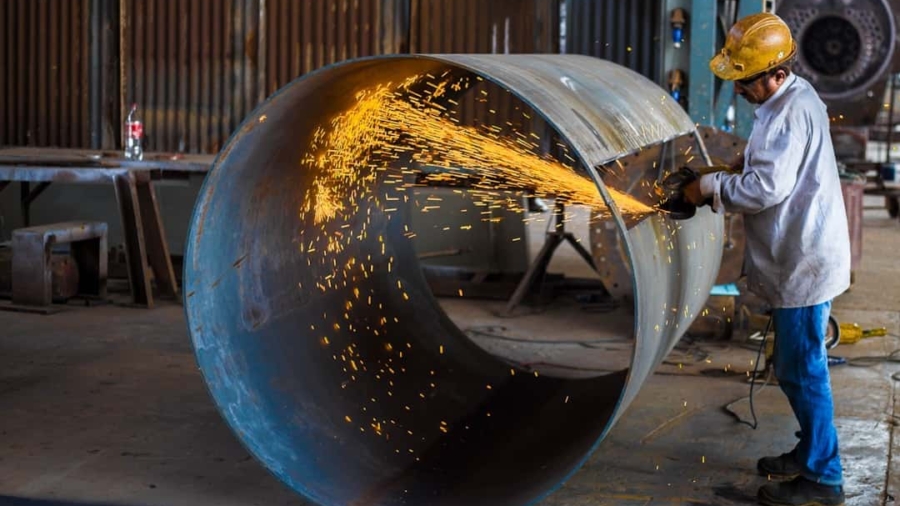The integration of artificial intelligence (AI) into robotics has revolutionized various industries, and welding is no exception. AI-powered robotics in welding represents a significant leap forward in the capabilities of automated systems, enabling them to perform complex tasks with a level of precision and adaptability that was previously unattainable. This technological advancement is not merely an enhancement of existing robotic systems; it fundamentally transforms the way welding operations are conducted, leading to improved outcomes across multiple dimensions.
As industries increasingly adopt these advanced systems, the implications for productivity, quality, and safety are profound. AI-powered welding robots utilize machine learning algorithms and advanced sensors to analyze real-time data during the welding process. This allows them to make instantaneous adjustments based on environmental conditions, material properties, and other variables that can affect the quality of the weld.
The ability to learn from past experiences and adapt to new situations makes these robots exceptionally versatile. They can handle a wide range of materials and welding techniques, making them suitable for diverse applications in sectors such as automotive, aerospace, and construction. As the demand for high-quality welds continues to rise, the role of AI in enhancing robotic welding processes becomes increasingly critical.
Key Takeaways
- AI-powered robotics in welding combines artificial intelligence with robotic technology to automate and improve the welding process.
- The benefits of AI-powered robotics in automated welding processes include increased efficiency, productivity, and safety.
- Improved precision and accuracy in welding are achieved through the use of AI-powered robotics, leading to higher quality welds.
- AI-powered robotics in welding operations result in efficiency and productivity gains, as robots can work continuously without fatigue or breaks.
- Safety enhancements in welding operations are achieved through the use of AI-powered robotics, reducing the risk of accidents and injuries for human workers.
Benefits of AI-Powered Robotics in Automated Welding Processes
Reducing Human Error
Traditional welding processes often rely on human operators who may be subject to fatigue, distraction, or inconsistent skill levels. In contrast, AI-powered robots maintain a consistent performance level, executing tasks with precision that is difficult for human welders to replicate over extended periods.
Optimizing Welding Parameters
AI-powered robotics can optimize welding parameters in real-time, adjusting factors such as speed, temperature, and feed rate based on immediate feedback from sensors. This dynamic adjustment capability ensures that each weld is executed under optimal conditions, further enhancing the quality and strength of the final product.
Data-Driven Process Refining
These systems can analyze historical data to identify trends and patterns that inform future operations. By leveraging this data-driven approach, manufacturers can continuously refine their processes, leading to ongoing improvements in efficiency and output quality.
Improved Precision and Accuracy in Welding with AI-Powered Robotics

Precision and accuracy are paramount in welding applications, where even minor deviations can result in significant structural weaknesses or failures. AI-powered robotics excel in this regard by employing advanced algorithms that enable them to execute complex welding paths with remarkable accuracy. These robots are equipped with high-resolution cameras and sensors that provide real-time feedback on the welding process.
This feedback loop allows the robot to make micro-adjustments as needed, ensuring that the weld bead is applied uniformly and adheres to specified tolerances. Furthermore, the use of AI enhances the ability to perform intricate welds that require a high degree of skill and finesse. For instance, in applications such as aerospace manufacturing, where components must meet stringent safety standards, AI-powered robots can replicate complex welding techniques with a level of consistency that human welders may struggle to achieve.
The ability to program these robots with precise specifications means that they can produce identical welds across multiple units, which is crucial for mass production scenarios where uniformity is essential.
Efficiency and Productivity Gains through AI-Powered Robotics
The implementation of AI-powered robotics in welding processes leads to significant efficiency gains that translate into increased productivity for manufacturers. One of the primary factors contributing to this enhanced efficiency is the reduction in cycle times. Traditional welding methods often involve lengthy setup times and manual adjustments, which can slow down production rates.
In contrast, AI-driven robots can quickly adapt to different tasks and materials without extensive reconfiguration, allowing for faster transitions between jobs. Additionally, these robots can operate continuously without the need for breaks or downtime associated with human workers. This capability enables manufacturers to maximize their output while minimizing labor costs.
The ability to run multiple shifts without interruption means that production facilities can achieve higher throughput levels than ever before. Moreover, AI systems can analyze workflow data to identify bottlenecks or inefficiencies in the production line, providing insights that help managers optimize operations further.
Safety Enhancements in Welding Operations with AI-Powered Robotics
Safety is a critical concern in welding operations due to the inherent risks associated with high temperatures, toxic fumes, and heavy machinery. The introduction of AI-powered robotics significantly enhances safety protocols within these environments. By automating hazardous tasks, these robots reduce the exposure of human workers to dangerous conditions.
For example, robots can be deployed in confined spaces or areas with high levels of toxic gases where human presence would be risky. Moreover, AI systems are equipped with advanced safety features such as collision detection and emergency stop mechanisms. These features allow robots to operate safely alongside human workers by preventing accidents caused by unexpected movements or equipment malfunctions.
The integration of AI also enables predictive maintenance capabilities; by monitoring equipment performance and identifying potential issues before they escalate, manufacturers can mitigate risks associated with equipment failure.
Integration of AI-Powered Robotics with Welding Equipment

The successful implementation of AI-powered robotics in welding processes hinges on seamless integration with existing welding equipment. Modern robotic systems are designed to work in conjunction with various types of welding machines, including MIG (Metal Inert Gas), TIG (Tungsten Inert Gas), and laser welding systems.
Furthermore, the integration process involves sophisticated software that enables communication between the robot and the welding equipment. This software facilitates real-time data exchange, allowing the robot to adjust its parameters based on feedback from the welding machine. For instance, if a sensor detects a deviation in temperature during a weld, the robot can immediately modify its settings to compensate for this change.
This level of integration not only enhances operational efficiency but also ensures that quality control measures are maintained throughout the welding process.
Future Trends and Developments in AI-Powered Robotics for Welding
As technology continues to evolve, the future of AI-powered robotics in welding holds exciting possibilities. One emerging trend is the increased use of collaborative robots (cobots) that work alongside human operators rather than replacing them entirely. These cobots are designed to assist welders by taking on repetitive or physically demanding tasks while allowing humans to focus on more complex aspects of the job.
This collaborative approach not only enhances productivity but also fosters a safer working environment. Another significant development is the advancement of machine learning algorithms that enable robots to learn from their experiences over time. As these systems gather more data from various welding operations, they become increasingly adept at optimizing their performance based on historical outcomes.
This capability could lead to fully autonomous welding systems capable of making real-time decisions without human intervention, further streamlining production processes. Additionally, as industries push towards sustainability, there is a growing emphasis on developing eco-friendly welding practices through AI-powered robotics. Innovations such as energy-efficient welding techniques and reduced material waste are becoming focal points for research and development efforts within this field.
The Impact of AI-Powered Robotics on the Future of Automated Welding
The impact of AI-powered robotics on automated welding processes is profound and far-reaching. By enhancing precision, efficiency, safety, and integration capabilities, these advanced systems are reshaping the landscape of manufacturing across various sectors. As industries continue to embrace automation and artificial intelligence, the potential for further advancements in robotic welding technology remains vast.
The ongoing evolution of AI-powered robotics promises not only to improve current practices but also to pave the way for innovative solutions that address emerging challenges within the industry.
If you are interested in exploring the intersection of technology and business, you may also want to check out The Best Tablets for Business in 2023. This article provides insights into the top tablets that can enhance productivity and efficiency in a business setting.
FAQs
What is AI-powered robotics in the context of automated welding processes?
AI-powered robotics in the context of automated welding processes refers to the use of artificial intelligence (AI) to enhance the capabilities of robotic welding systems. This technology allows robots to analyze data, make decisions, and adapt to changes in real-time, improving the efficiency and quality of automated welding processes.
How does AI-powered robotics enhance automated welding processes?
AI-powered robotics enhances automated welding processes by enabling robots to optimize welding parameters, adjust to variations in materials and conditions, and detect and correct defects in real-time. This results in improved precision, productivity, and quality in welding operations.
What are the benefits of using AI-powered robotics in automated welding processes?
The benefits of using AI-powered robotics in automated welding processes include increased productivity, improved weld quality, reduced rework, enhanced safety, and the ability to handle complex welding tasks with greater efficiency and accuracy. Additionally, AI-powered robotics can help manufacturers achieve cost savings and competitive advantages in the welding industry.
What are some examples of AI-powered robotics technologies used in automated welding processes?
Examples of AI-powered robotics technologies used in automated welding processes include machine learning algorithms for weld parameter optimization, computer vision systems for defect detection and quality control, and adaptive control systems that enable robots to adjust welding processes in real-time based on sensor data and environmental conditions.
How is AI-powered robotics shaping the future of automated welding processes?
AI-powered robotics is shaping the future of automated welding processes by enabling the development of more advanced, flexible, and intelligent welding systems. This technology is expected to drive innovation in the welding industry, leading to increased automation, improved efficiency, and the ability to tackle a wider range of welding applications with higher precision and reliability.

